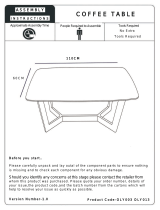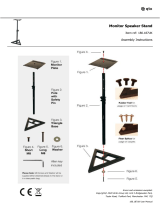
1-10 4222983 Second Edition
SAFETY
1
Service Electrical Components
Safely
WARNING
WARNING
WARNING
WARNING
WARNING
• Disconnect the battery negative (–) cable before
removing or installing electrical components. Always
connect the battery negative (–) cable last.
• Certain test and adjustment procedures must be
performed with the battery connected. Use care to
prevent arcing when working on live circuits or
components. Arcing can cause component damage
and could ignite flammable materials.
Always disconnect the negative terminal first and
positive terminal last. Connect positive terminal
first and negative terminal last. Use care when
testing live circuits to prevent arcing. Arcing
could result in death or serious injury.
Wrap wrenches with vinyl tape to prevent the
possibility of a dropped wrench from “shorting
out” a battery, which could result in an explosion
and severe personal injury.
Electrolyte spills should be neutralized with a
solution of 1/4 cup (59.1 ml) of sodium
bicarbonate (baking soda) dissolved in 1-1/2
gallons (5.7 liters) of water and flushed with
water.
Never disconnect a circuit under load at a battery
terminal.
Wear appropriate protective clothing when
working with batteries. Electrolyte can cause
severe burns to the eyes, skin, and clothing.
Batteries, battery posts, terminals, and related
accessories contain lead and lead compounds,
chemicals known to the State of California to
cause cancer and reproductive harm. Wash your
hands after handling.
The electrolyte in a storage battery is a dilute acid
which can cause severe burns to the skin and
eyes. Treat all electrolyte spills to the body and
eyes with extended flushing with clear water.
Contact a physician immediately. Always wear a
safety shield or approved safety goggles when
charging batteries.
Hydrogen is explosive in concentrations as low
as 4% and is generated in the charging cycle of
electric mowers. Because it is lighter than air, it
will collect in the ceiling of buildings
necessitating proper ventilation. Air exchanges
of 5 changes per hour is considered a minimum
requirement.
Never smoke around batteries.
Never charge batteries in an area that has open
flame or electrical equipment that could cause an
electrical arc.
Be sure that the key switch is off, all electrical
accessories are turned off and power connector
is disconnected before starting work on vehicle.
Remove all jewelry (watches, rings, etc.).
Chargers should be mounted on a platform above
the ground, or in such a manner as to permit the
maximum air flow underneath and around the
charger. Serious damage to the charger,
overheating, and potential for fire may result if
the charger does not have sufficient air flow.
Do not disconnect the DC connector from the
battery pack when the charger is on. The
resulting arcing and burning will damage the
conductors and could cause the batteries to
explode. Always disconnect the AC power cord
before disconnecting the DC cord.
























